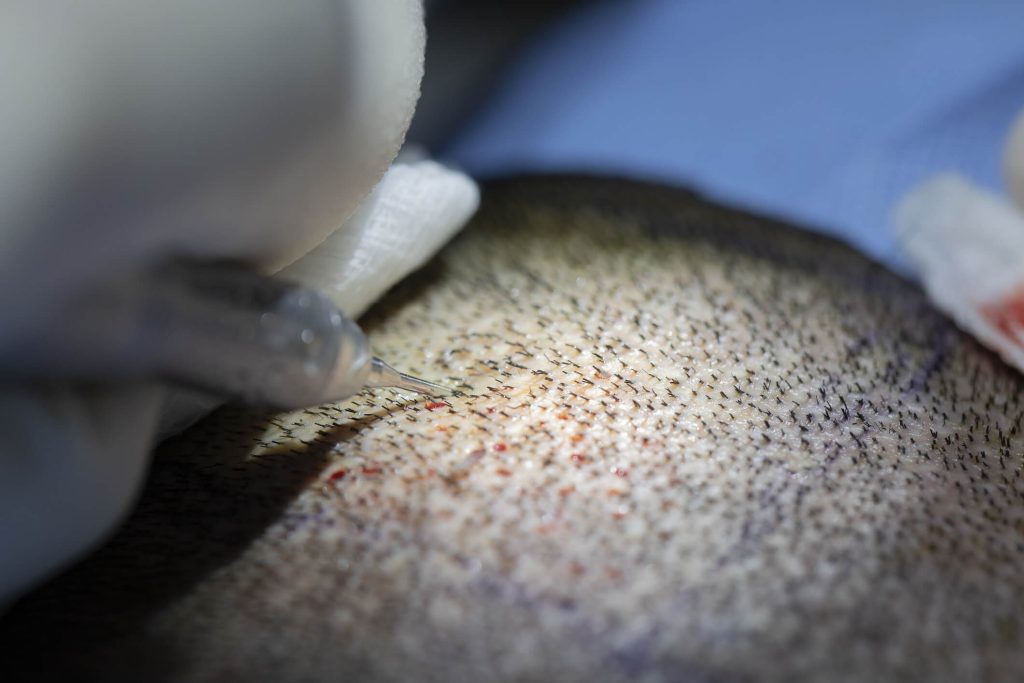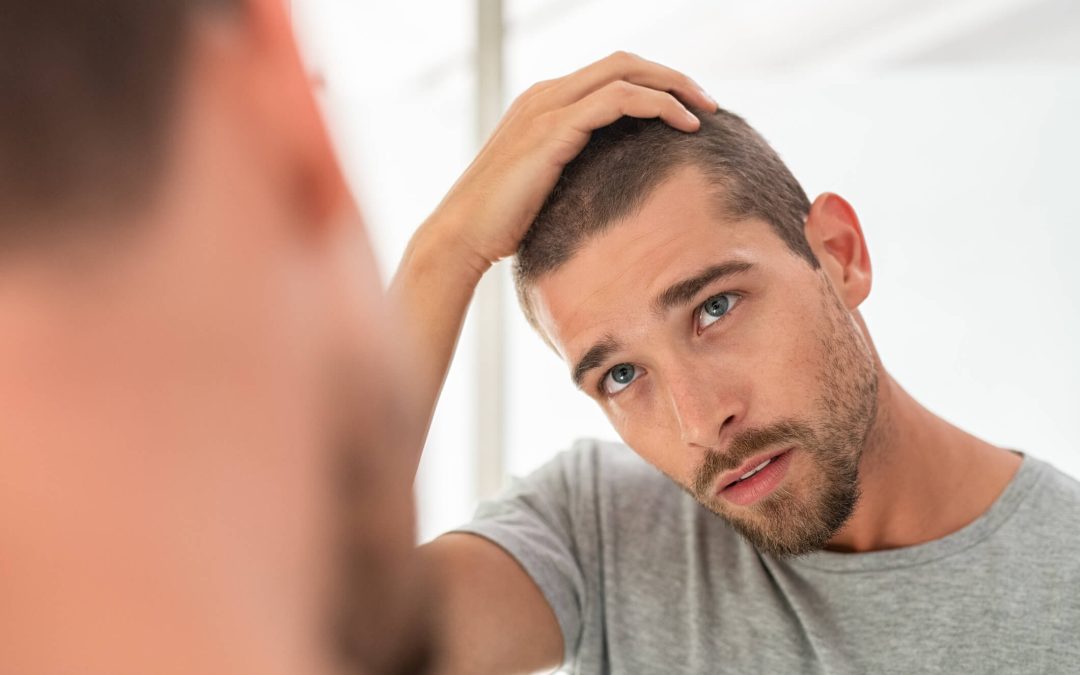Hair loss affects millions of men and women across all ages, impacting confidence, appearance, and quality of life. For those in Orange County looking for a permanent solution, Neograft hair restoration offers advanced, minimally invasive technology that delivers natural-looking and lasting results. This method addresses common issues such as hair thinning, alopecia, and pattern baldness with precision, comfort, and no visible scarring, especially in the frontal part of the head, where loss is often most noticeable.
Unlike older hair transplant procedures that involved noticeable stitches and extended downtime, Neograft uses follicular unit extraction (FUE) to achieve denser hair growth, minimal healing time, and improved patient comfort. If you’re a candidate for this treatment, it’s crucial to have the correct information, ask essential questions, and take that one step toward a confident, restored appearance. But how long do the results last—and is a hair transplant permanent?
Let’s explore the science, methods, and expectations behind this innovative solution for hair restoration in Orange County.
Neograft FUE Offers Minimally Invasive Precision
Neograft utilizes the FUE method, which involves the individual extraction of healthy hair follicles from a genetically resistant donor area, typically the back or sides of the scalp—a place that plays a critical role in long-term hair restoration. These follicles are then carefully implanted into recipient areas affected by hair thinning or complete loss. In many surgeries, especially for men dealing with male pattern baldness, this technique significantly reduces the risk of visible scars, which are associated with older methods.
Each follicular unit, or graft, may contain 1 to 4 hairs, preserving the natural appearance of the transplanted area. The Neograft system uses pneumatic pressure to extract and re-implant these grafts, minimizing damage and increasing the survival rate of the follicles, which improves the outcome. The experienced medical team at your chosen clinic understands the underlying causes of hair loss and customizes each procedure to maximize your chance of success. This article provides clear insight into how Neograft works and why it’s trusted for effective hair restoration surgeries.
Unlike follicular unit transplantation (FUT), which requires removing a strip of skin from the scalp, Neograft uses the follicular unit extraction (FUE) method—an advanced, minimally invasive alternative. FUE vs FUT Hair Transplant is a critical comparison for many patients: while FUT may leave a linear scar and require stitches, FUE offers a suture-free, scar-free solution that reduces healing time and post-operative discomfort. Neograft enhances this by automating parts of the FUE process, further improving precision and graft survival. It’s ideal for individuals seeking both subtle and transformative results with minimal downtime.
Genetic Resistance Supports Transplanted Hair Longevity
A key point explaining why hair transplants are considered permanent lies in the genetic resistance of the donor hair to the hormone DHT (dihydrotestosterone)—a primary cause of hair loss in both men and women. Once transplanted to the recipient area, these follicles retain their resistance and continue to produce healthy hair growth, regardless of the hormonal symptoms that typically affect native hair.
This theory is supported by countless clinical posts, studies, and patient experiences that document the lasting outcome of hair transplantation. The transplanted hair follicles are not impacted by the hormonal problem that causes pattern baldness, which is why they often last a lifetime with proper care. For any person considering treatment, it’s essential to understand the reasons behind donor area selection and how these grafts function once implanted. Whether you’re reading this on a clinic blog or via an app, the goal is to provide clear, science-backed information in an accessible form to help you make confident, informed decisions.
However, it’s important to note that native, non-transplanted hairs may still thin over time. That’s why a complete restoration plan, including follow-up treatments and lifestyle guidance, is essential for long-term success.
Surgical Technique Directly Influences Hair Restoration Success
The longevity and natural look of a hair transplant are determined not just by the method, but by the skill and expertise of the surgeon performing the procedure. An experienced hair transplant surgeon ensures:
- Optimal graft placement for natural hairlines
- Minimal trauma during follicle implantation
- Strategic use of limited donor hair
- Reduced risk of scarring, infection, and poor graft survival
Clinics in Orange County offering Neograft typically employ board-certified doctors and experienced medical teams who specialize in hair transplantation techniques, from extraction to implantation.
Donor Hair Quality Determines Transplant Viability
Not all patients are ideal candidates for hair transplant surgery. The success of the procedure depends on having a sufficient supply of healthy, DHT-resistant donor hair in regions like the back or sides of the scalp. If the donor area lacks density or is affected by hair thinning, the number of usable grafts may be limited, reducing the possibility of achieving complete, natural-looking coverage. It’s essential to recognize that not everyone qualifies for the procedure, and understanding this early in the process helps set realistic expectations.
During your initial consultation, the doctor will evaluate your scalp condition, assess hair density, and determine if your donor follicles are viable for transplantation. This assessment is one of the most critical steps in the treatment journey. Asking each question that matters to you ensures transparency and alignment with your goals. Patients also have the right to receive complete information about the procedure, including the expected duration, healing timeline, and potential results. This knowledge empowers you to make informed decisions with clarity and confidence.

Precision hair restoration tools used during FUE procedures at Neograft Hair Restoration Orange County in California
Medications and Therapies Support Long-Term Density
Although the transplanted hair follicles are permanent, non-transplanted hair is still susceptible to loss due to hormonal or genetic factors. To support overall hair density, many surgeons recommend combining surgery with medical treatments such as:
- Finasteride (Propecia): A prescription oral medication that blocks DHT to slow or stop hair thinning.
- Minoxidil (Rogaine): A topical treatment that stimulates hair growth and maintains follicle vitality.
- Platelet-Rich Plasma (PRP) Therapy: A regenerative procedure that uses your blood plasma to boost hair follicle activity post-surgery.
These supportive treatments help extend the lifetime and quality of the hair restoration.
Ideal Candidates Have Stable Hair Loss Patterns
The best outcomes occur when hair transplant procedures are performed on patients with stable hair loss. Ideal candidates typically include:
- Men or women with androgenetic alopecia
- Patients over age 25 with a predictable hair loss pattern
- Individuals with strong, healthy donor areas
- People with realistic expectations and no underlying health conditions affecting healing
People with rapidly progressing balding may require a staged treatment plan, combining surgery with ongoing medication or PRP therapy.
The Recovery Process Impacts Final Results
Hair transplant recovery is a multi-stage process. While Neograft is minimally invasive, post-operative care is essential to ensure optimal graft survival and long-term growth. Key milestones include:
- Week 1–2: Scabbing, redness, and temporary shedding of implanted hairs
- Month 3–4: New follicles begin visible growth
- Month 6–12: Noticeable improvements in density and coverage
- Month 12–18: Full results achieved, with natural integration
Patients receive detailed aftercare instructions to reduce risks like infection, folliculitis, or shock loss. Avoiding strenuous activities and following the surgeon’s guidance is critical.
Surgeon Skill Ensures Natural Hairlines and Density
A successful hair restoration is not just about volume—it’s about artistry. Designing a natural-looking hairline, managing graft density, and respecting the existing hair growth pattern are all elements of a high-quality result that blends seamlessly with the rest of your natural hair.
Experienced surgeons in Orange County use advanced mapping techniques, photos, and software to plan your hair transplant procedure in detail. This planning helps achieve a look that complements your facial features, age, and personal style.
Maintenance Plans Extend the Life of Your Hair Restoration
To ensure lasting results, most clinics provide ongoing care plans tailored to each patient. These may include:
- Monthly or quarterly PRP sessions
- Continuous use of finasteride and/or minoxidil
- Scalp health assessments with a dermatologist
- Lifestyle and nutrition advice to support follicle health
Even if a single procedure produces excellent results, a well-structured maintenance routine helps preserve the natural appearance and maximize the lifetime of your investment.
Genetics and Lifestyle Influence Hair Survival
Beyond the surgery itself, your genes, age, and lifestyle choices significantly influence the future of your hair. Stress, diet, smoking, and certain medications can negatively affect the health of both transplanted and native follicles, potentially limiting long-term growth even after a successful procedure. While a hair transplant offers a permanent solution to many types of hair loss, maintaining results depends heavily on personal habits and ongoing scalp health.
Practicing good scalp hygiene, exercising regularly, and avoiding chemical damage or over-styling can all contribute to the survival and vitality of your transplanted hair. Patients are encouraged to treat their implants as they would natural hair—with regular washing, conditioning, and proper care—to support lasting results and healthy regrowth.
Setting Expectations Enhances Patient Satisfaction
While Neograft can restore hair density, reshape your hairline, and dramatically improve your appearance, it’s not a cure-all for hair loss. Like all hair restoration methods, the success of the procedure is influenced by factors such as donor hair availability, scalp health, and patient age. In some cases, ongoing medications like minoxidil or finasteride may be recommended to help preserve non-transplanted hairs on the head and support overall hair health.
Managing expectations is key. Most patients are delighted with their results, but understanding the process, limitations, and realistic timeframes helps ensure you’re fully prepared—both mentally and emotionally—for every step of the journey toward lasting hair restoration.
Neograft Provides a Permanent Solution for Hair Loss

Live hair transplant surgery performed by a trained professional at Neograft Hair Restoration Orange County in California
Unlike temporary fixes or cosmetic camouflage, Neograft FUE offers a lasting and reliable answer to hair loss. The transplanted follicles, once healed and integrated, continue to grow for decades—often for a lifetime. This makes Neograft Hair Restoration Orange County an ideal option for those looking to restore their hairline, improve density, and boost confidence naturally and sustainably.
In Orange County, where world-class clinics and top-tier surgeons are readily accessible, patients can trust that their hair restoration journey is in expert hands.
Your Hair Restoration Journey Begins with a Consultation
Every successful hair transplant begins with a personalized, in-depth consultation. During this session, your surgeon will assess your scalp, discuss your medical history, explore treatment options, and create a roadmap tailored to your goals.
Whether you’re just starting to notice hair thinning or have struggled with balding for years, a Neograft consultation can help determine the right time, technique, and strategy for your unique case.
Final Thoughts
Hair transplants performed using the Neograft FUE method offer a permanent, natural, and life-changing solution for hair loss. By understanding the process, selecting an experienced clinic, and committing to proper care, patients in Orange County can achieve results that last a lifetime.
Frequently Asked Questions
1. Can Neograft be used to restore facial hair, such as beards or eyebrows?
Yes, Neograft FUE technology can be adapted to restore facial hair, including beard, mustache, and eyebrow areas. The precision of follicular unit extraction allows for detailed placement that mimics natural hair direction and density.
2. Is there an age limit for undergoing a Neograft hair transplant?
While there is no strict age limit, candidates should ideally be over 25, when hair loss patterns are more stabilized. Very young patients may require staged treatment over time due to evolving hair loss.
3. How does Neograft compare to robotic hair transplant systems?
Neograft is semi-automated, providing surgeons greater control than fully robotic systems. It reduces manual fatigue during extraction and implantation, but still relies on the surgeon’s expertise for design and execution.
4. Will my hair transplant look different from my natural hair in texture or color?
No. Because the transplanted hair comes from your donor area, it maintains the same texture, color, and growth pattern. Once fully grown, it blends seamlessly with your natural hair.
5. How soon can I return to work after a Neograft hair transplant?
Most patients return to non-strenuous work within 2–5 days. Minor redness or scabbing may persist for a week, but the lack of stitches or bandages allows for quicker reintegration into daily life.
6. Can I wear hats or helmets after my procedure?
You should avoid hats or helmets for at least 7–10 days post-surgery to avoid disrupting newly implanted grafts. After healing begins, you may wear them as advised by your surgeon.
7. Is Neograft suitable for women experiencing hair thinning?
Yes. Neograft is ideal for women with diffuse thinning or specific areas of hair loss. A consultation will determine if you’re a candidate based on donor hair quality and pattern of hair loss.
8. What is the typical cost range for a Neograft procedure in Orange County?
Prices vary depending on the number of grafts needed, the clinic’s reputation, and the surgeon’s expertise. Generally, expect to invest between $5,000 and $15,000 for a single session in Orange County.
9. Will I need more than one hair transplant procedure over time?
It depends. While the transplanted hair is permanent, ongoing hair loss in untreated areas may require additional sessions in the future to maintain a uniform appearance.
10. How do I choose the right clinic or surgeon for my Neograft hair transplant?
Look for board-certified surgeons with a portfolio of successful transplants, transparent consultations, and patient testimonials. Verify that the clinic specializes in FUE procedures and offers personalized treatment plans.













